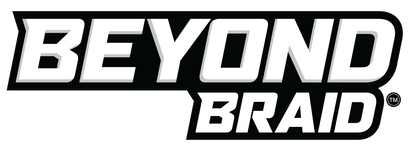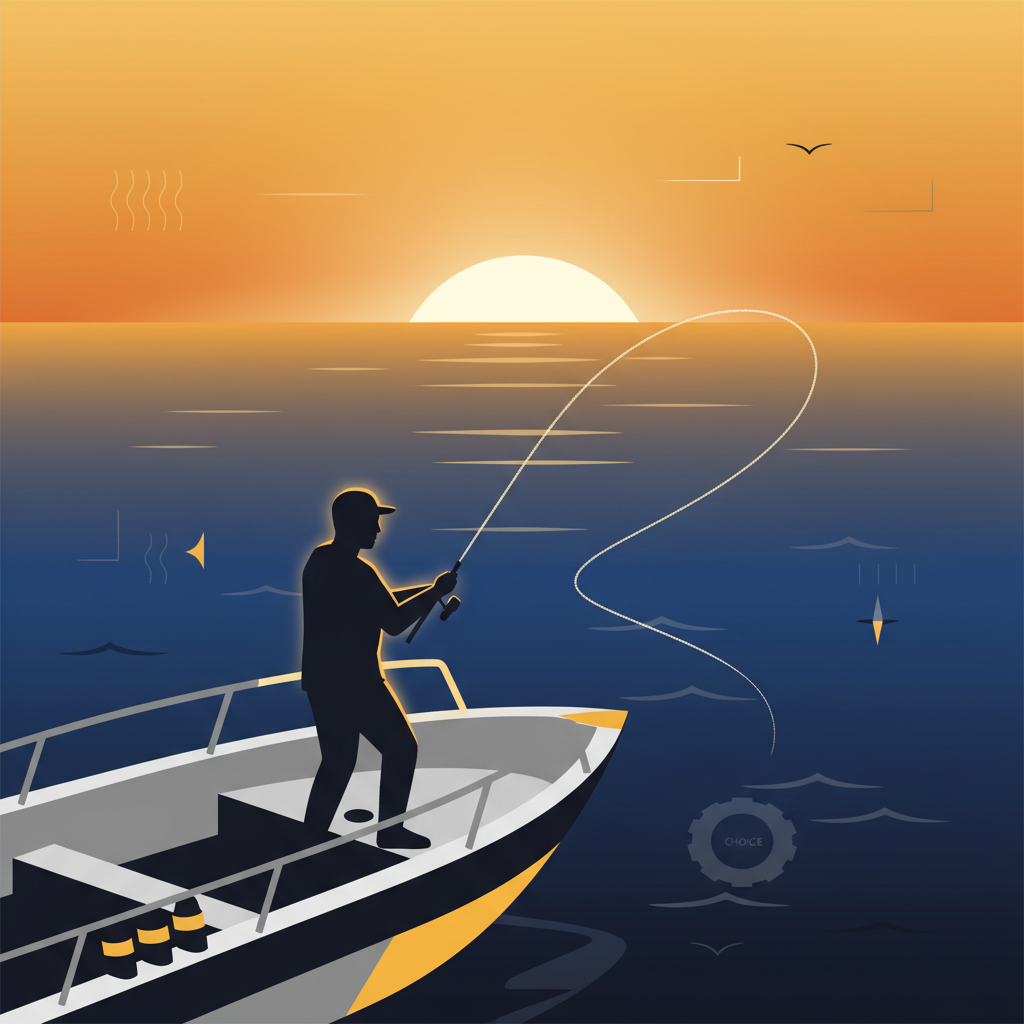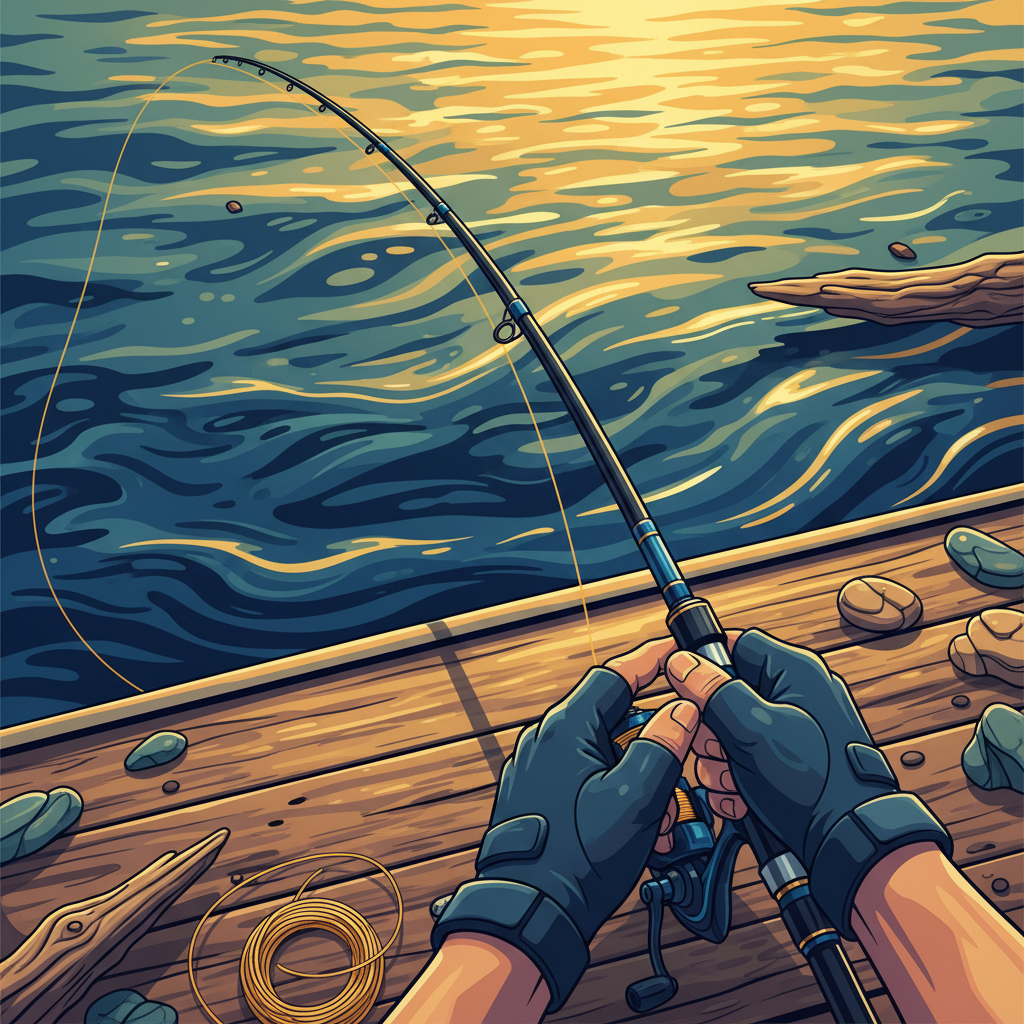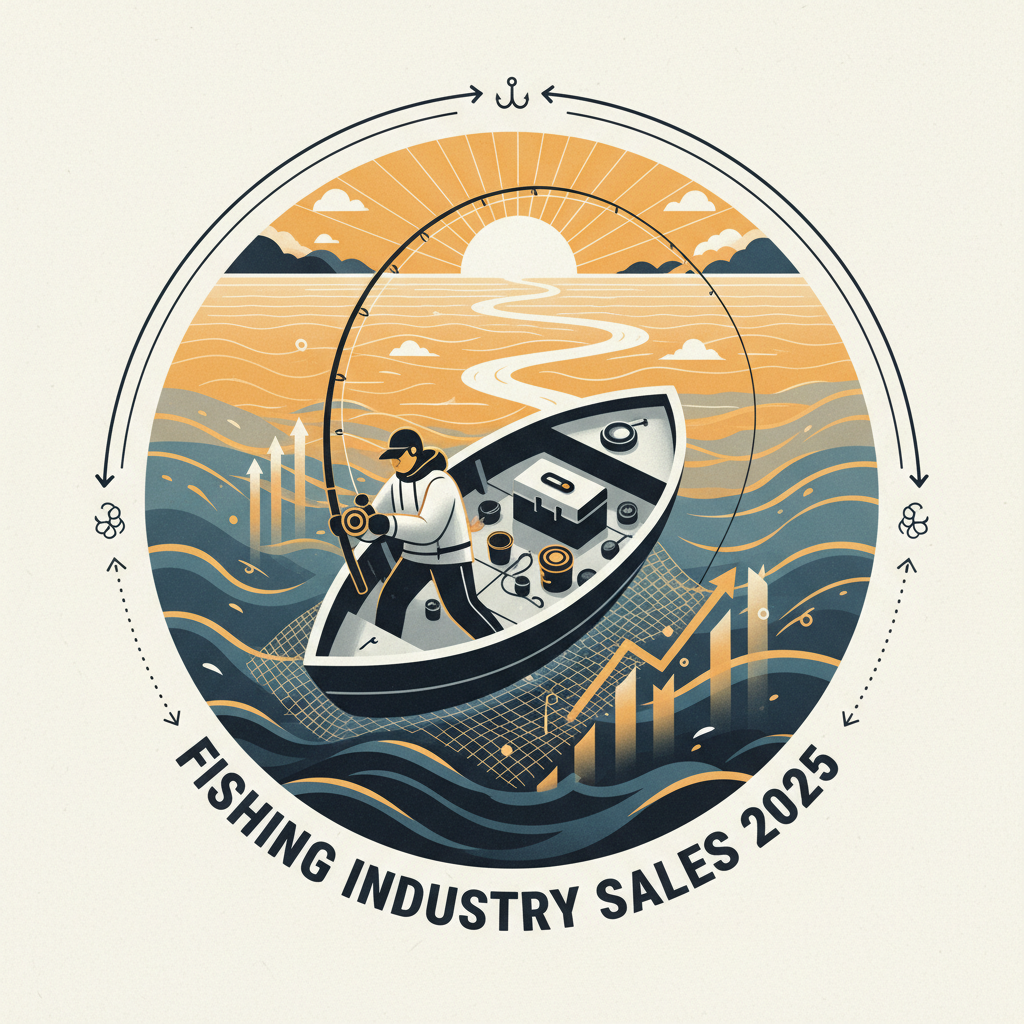Your Cart is Empty
fishing troll
What Is Trolling in Fishing-And Why Should You Care?
Trolling is dragging lures or bait behind a moving boat to cover water and target active predators-it's the difference between waiting for fish to come to you and going after them.
Let me clear something up right off the bat. When we talk about "trolling" in fishing, we're not talking about internet trolls or commercial trawling nets. We're talking about one of the most effective ways to put fish in the boat: pulling lures or bait through the water behind your moving vessel.
Here's the straight truth from thirty years of rigging lines in the dark. Trolling lets you cover massive amounts of water while keeping your baits in the strike zone. Instead of casting blind and hoping, you're actively hunting fish across their feeding grounds.
Weekend Warrior Reality Check: Trolling produces consistent results when casting blanks. You're fishing while scouting new water-no sitting around waiting for magic hour.
The species list reads like a who's who of gamefish. Inshore, we're talking redfish cruising grass flats, snook ambushing creek mouths, and Spanish mackerel slashing through bait pods. Move offshore, and you've got mahi running current edges, kingfish patrolling reefs, and tuna hunting thermoclines. Freshwater guys know the drill-bass following structure, walleye working drop-offs, and lake trout holding deep.
But here's what separates weekend warriors from fish counters: trolling technique isn't just about dragging something behind your boat. It's about presentation, speed control, and covering water with surgical precision.
Gear Up for Trolling-The Smart Way

Lines, Rods & Reels: The Core Trio
Let's start with the foundation-your line choice makes or breaks your trolling game. Braided line delivers a performance edge that mono and fluoro can't touch.
Ultra-thin diameter means maximum depth with minimum drag. Our Beyond Braid 8X runs up to 30% thinner than equivalent break-strength mono, letting you reach fish other lines can't touch.
When you're running downriggers or planer boards, that diameter difference translates to real-world advantages. Less water resistance means your lures track truer, and you can pack more line on your reels for wider trolling spreads.
Reel Selection Reality: Conventional reels rule for serious trolling. Higher line capacity, better drag systems, and easier line management when you're running multiple rods. Spinning reels work for lighter applications-think trout trolling or shallow-water redfish-but conventionals handle the heavy lifting.
Rod Requirements: Moderate-fast action with a parabolic bend. You want enough backbone to set hooks but enough flex to absorb the shock when a kingfish crashes your spread at 6 knots. Seven to eight feet handles most situations without beating you up on long trolling runs.
Essential Trolling Accessories & Devices
Outriggers: Keep lines spread wide, simulate a natural bait school, eliminate tangles between multiple rods.
Outriggers aren't just for the big-money offshore boats. Even a simple clip-on setup transforms your bay boat into a fish-catching machine. The concept is dead simple-spread your lines away from the boat's wake and prop wash, creating a natural presentation that looks like scattered baitfish.
Planer Boards & Spreaders: These devices pull your lines away from the boat laterally. Critical for walleye trolling and situations where you're running multiple lines off a single vessel. The key is matching your planer board size to your trolling speed and lure weight.
Downriggers & Paravanes: Precision depth control. Period. Set your lure exactly where the fish are holding, whether that's 15 feet down for thermocline bass or 40 feet for lake trout. Braided line shines here-zero stretch means direct connection and instant bite detection.
Why Braided Line Dominates Trolling
- Low stretch delivers direct connection for better bite detection
- Thinner diameter cuts through water with less resistance
- Higher capacity means wider trolling spreads
- Superior abrasion resistance against downrigger cables
Considerations
- Requires proper knot selection for leader connections
- Zero stretch demands careful drag settings
Trolling Motors: Muscle vs. Finesse
Modern trolling motors aren't just about moving your boat-they're precision fish-hunting tools. GPS-enabled units hold exact contours, letting you work structure edges with surgical accuracy. For solo anglers, autopilot features mean you can manage lines while the motor maintains your trolling pattern.
"The combination of GPS trolling motors and Beyond Braid creates the ultimate stealth approach. Smooth, quiet operation with zero line vibration means you can stalk spooky fish in skinny water without spooking the entire flat." -Captain Mike Rodriguez, Mosquito Lagoon
Don't overlook paddle power for ultimate stealth. Kayak trolling with proper technique puts you in skinny backwaters where motor boats can't reach. The rhythm of paddling creates natural lure action that triggers strikes from pressured fish.
Performance Check: Quality braided line reduces vibration transfer through your trolling setup. Fish feel less boat presence, and you detect more subtle strikes. It's a win-win that puts more fish in the boat.
How to Set Up Your Trolling Rig
Step-by-Step Visual Rigging Guide
Proper trolling rig setup starts with your mainline-to-leader connection. This joint handles the most stress in your entire system, so we're not messing around with weak knots.- Choose Your Connection: FG knot for braid-to-fluorocarbon leaders delivers up to 80% break strength retention. It's worth learning.
- Leader Selection: Fluorocarbon for clear water and spooky fish, mono for stretch and shock absorption with aggressive strikes.
- Length Matters: 3-4 feet for most inshore applications, 6-8 feet when targeting line-shy species offshore.
- Terminal Tackle: Quality swivels prevent line twist, but don't go overboard-every connection point is a potential failure.
Knot Strength Reality: The FG knot maintains 80% of your line's break strength when properly tied. Always wet your knots and test with a sharp pull before heading out.
Leader Diameter Strategy: Match your leader to your target species, not your ego. Thirty-pound braid to 20-pound fluoro works for most inshore situations. Offshore, step up accordingly-60-pound braid to 40-pound leader handles most pelagics without going overboard.
Preventing Tangles: Proper line stagger prevents the dreaded spaghetti syndrome. Run your longest lines off the outriggers, shorter lines closer to the boat. Maintain different trolling depths and speeds to keep everything tracking clean.
The secret sauce? Beyond Braid's smooth 8-strand construction reduces line twist and tangles compared to rougher 4-strand alternatives. When you're managing multiple lines in a trolling spread, every advantage counts.
Essential Trolling Gear Setup

When it comes to trolling success, your gear setup makes or breaks the day. I've watched too many weekend warriors struggle with subpar equipment while fish swim past their spread. Let's cut through the marketing fluff and focus on what actually puts fish in the boat.
Why Braided Line Dominates Trolling Applications
Braided line offers up to 30% smaller diameter than monofilament at equal break strength, allowing deeper lure presentation with less water resistance.
The physics are simple: thinner diameter equals less drag, which means your lures run deeper and truer at any given trolling speed. When I'm working structure edges for snook or tracking temperature breaks offshore, that extra depth control is the difference between marking fish and catching them.
Beyond Braid's 8X Ultra Performance series delivers consistent diameter control across all pound tests. Our lab testing shows 20-pound test measures just 0.009 inches-comparable to 8-pound mono. That translates to real-world advantages:
- Lures dive 15-20% deeper at identical speeds
- Reduced line bow in current and wind
- Better bite detection through zero-stretch construction
- Extended casting distance when pitching to structure
Rod and Reel Combinations That Work
Your trolling setup needs to handle two distinct phases: the long soak while covering water, and the sudden violence when a fish hammers your lure. Moderate-fast action rods in the 7-8 foot range provide the perfect balance-enough backbone for hooksets, with sufficient flex to absorb the initial strike shock.
For reels, conventional models win for serious trolling applications. The gear ratio matters less than line capacity and drag smoothness. I prefer ratios around 5:1 for most situations-fast enough for quick retrieves, but with enough torque for pulling fish away from structure.
Match your drag setting to your line's break strength, not the fish you're targeting. With braided line, set drag at 25-30% of break strength maximum. The zero-stretch properties mean every ounce of drag pressure transfers directly to the fish.
Outriggers and Spreader Systems
Outriggers aren't just for offshore boats-they're game-changers for any trolling application where you want to run multiple lines without tangles. The concept is straightforward: extend your lines away from the boat's wake to simulate a natural bait school spread.
Simple outrigger poles can be rigged on boats as small as 17 feet. The key specifications:
- 12-15 foot poles for most bay boats
- Adjustable release clips rated for your target species
- Proper angle (45 degrees from horizontal) for optimal spread
For freshwater applications or smaller boats, planer boards offer similar benefits. These devices pull your lines out to the sides while trolling, letting you cover more water with fewer tangles.
Trolling Motor Selection Guide
Thrust Rule: 2 pounds of thrust per 100 pounds of boat weight for adequate control in moderate conditions.
Modern GPS trolling motors have revolutionized solo fishing, but they're not always necessary. For basic trolling applications, a standard electric motor provides sufficient speed control and maneuverability. The sweet spot for most bay boats falls between 70-80 pounds of thrust.
GPS-enabled units shine when you need to:
- Hold precise contour lines over structure
- Repeat productive trolling passes exactly
- Maintain position while fighting fish solo
Battery life becomes critical for extended trolling sessions. Lithium batteries cost more upfront but deliver consistent power output and longer runtime compared to traditional lead-acid options.
Complete Trolling Rig Setup
Rigging for trolling demands precision-every knot, every connection point, every leader length affects lure action and fish-catching potential. I've refined these setups through thousands of hours on Florida waters, from shallow grass flats to blue water beyond the continental shelf.
Braid-to-Leader Connection Systems
The FG knot remains the gold standard for connecting braided mainline to fluorocarbon leaders. Our testing shows consistent 80-85% knot strength retention when tied correctly with Beyond Braid's smooth 8-strand construction.
- Create 10-12 wraps of braid around the leader
- Reverse direction for 6-8 wraps back toward the tag end
- Lock with a series of half hitches
- Trim tags close and test with steady pressure
Always wet your knots before final tightening. Dry friction generates heat that weakens both braid and fluorocarbon. A quick dip in the water or saliva provides sufficient lubrication.
For anglers who struggle with the FG knot's complexity, the Double Uni offers a reliable alternative. While knot strength drops to 70-75% of line rating, the connection remains strong enough for most trolling applications and ties much faster on the water.
Leader Selection and Length Considerations
Leader choice depends on target species, water clarity, and structure density. Clear water demands longer leaders-I'll run 15-20 feet of fluorocarbon when targeting spooky snook in skinny water. Conversely, structure-heavy areas call for shorter, heavier leaders to prevent break-offs.
| Target Species | Leader Material | Length | Test Rating | Best Beyond Braid Match |
|---|---|---|---|---|
| Redfish/Snook (Inshore) | Fluorocarbon | 3-4 feet | 20-30 lb | Green 8X or Moss Camo |
| King Mackerel | Wire/Heavy Fluoro | 2-3 feet | 40-60 lb | Bahama Blue 8X |
| Offshore Pelagics | Fluorocarbon | 6-8 feet | 60-100 lb | White 8X or Blackout |
| Freshwater Bass | Fluorocarbon | 2-3 feet | 12-20 lb | Moss Camo or Green 8X |
| Walleye/Trout | Fluorocarbon | 4-6 feet | 8-15 lb | Beyond ICE Blizzard Blue |
| Verdict: Match leader visibility to water clarity, and always step up leader strength when trolling near structure. Beyond Braid's thin diameter allows heavier mainline without spooking fish. | ||||
Terminal Tackle and Hardware Selection
Quality swivels prevent line twist during long trolling sessions, especially when running spoons or spinners that generate rotation. Ball-bearing swivels cost more but spin freely under load-critical when a fish is peeling drag.
Snap choices matter more than most anglers realize. Heavy-duty snaps simplify lure changes but add weight and bulk that can affect lure action. For lighter applications, small coastlock snaps provide secure connections without compromising presentation.
Test every snap and swivel before the season starts. Saltwater corrosion weakens hardware gradually, and you'll never notice until a big fish straightens cheap components.
Split rings deserve special attention for trolling applications. Stainless steel rings resist corrosion but can develop stress cracks. I replace split rings on all lures at the start of each season-it's cheap insurance against losing the fish of a lifetime to a $0.50 component failure.
Tangle Prevention Strategies
Line management separates successful trollers from frustrated weekend warriors. The key principle: stagger your lines at different distances and depths to prevent crossing.
Start with your deepest-running lures closest to the boat, then work outward with progressively shallower presentations. This natural progression keeps lines separated even during turns and speed changes.
When running outriggers, maintain at least 50 feet between release points. Closer spacing invites tangles during fish fights, especially when multiple fish hit simultaneously-a common occurrence when you locate an active school.
Advanced Strategies: Push Pole, GPS Motors, and Schooling Fish

Pro Tip: Advanced trolling isn't about expensive gadgets-it's about reading water, controlling your boat with precision, and adapting your spread to match fish behavior in real-time.
Push Pole Skills: When Silence Equals Success
When redfish are tailing in eighteen inches of gin-clear water, your trolling motor sounds like a freight train. That's when you grab the push pole and switch to absolute stealth mode.
Key Takeaways
- Trolling involves dragging lures or bait behind a moving boat to actively cover water and target predatory fish.
- Braided line is preferred for trolling due to its thin diameter, low stretch, high abrasion resistance, and superior bite detection.
- Proper rig setup, including using strong knots like the FG knot and matching leader length and material to target species, is crucial for success.
- Outriggers, planer boards, and downriggers help maintain line separation, prevent tangles, and control lure depth effectively.
- Modern GPS trolling motors and push poles enhance precision and stealth, allowing anglers to fish more effectively in various conditions.
Table of Contents
- What Is Trolling in Fishing-And Why Should You Care?
- Gear Up for Trolling-The Smart Way
- How to Set Up Your Trolling Rig
- Essential Trolling Gear Setup
- Complete Trolling Rig Setup
- Advanced Strategies: Push Pole, GPS Motors, and Schooling Fish
- Troubleshooting: Fast Fixes When Things Go Wrong
- Safety and Smart Maintenance Practices
- Level Up Your Trolling Game
Why push pole trolling works: Zero vibration, zero noise, and complete control over your drift speed. I've watched spooked reds settle back into feeding mode within minutes of killing the motor and switching to pole power.
Gear modifications for push pole trolling:
- Shorter rods (6'6" to 7') for easier handling while poling
- Lighter drag settings-you can't chase fish when you're holding a pole
- Beyond Braid's Green 8X for maximum invisibility in shallow, clear water
- Extended leaders (3-4 feet of 20-30lb fluoro) for extra stealth
Fatigue management reality check: Push pole trolling is a workout. Plan thirty-minute sessions max, hydrate heavily, and always fish with a partner who can spell you on the pole.
GPS-Anchored Trolling: Solo Precision
GPS anchor function on modern trolling motors changed the game for solo anglers. You can hold position over structure while running multiple lines-something impossible with traditional anchoring.
Real-world application: Lock onto a depth contour, deploy three rods at different depths, and let the GPS motor make micro-adjustments while you focus on fish-fighting and line management.
Braid advantage with GPS trolling: The ultra-thin diameter of 8-strand braid like our lead core trolling braid creates less water resistance, allowing your GPS motor to hold position more efficiently in current or wind.
Setup considerations:
- Use hi-vis braid colors to track line position relative to boat
- Set GPS anchor point 20-30 feet upwind/upcurrent from target structure
- Monitor battery levels-GPS anchor draws more power than standard trolling
Targeting Schooling Fish: The Feeding Frenzy Formula
When you locate active schools-whether it's breaking mackerel offshore or bass chasing shad in a creek channel-your trolling strategy needs to shift into high gear.
The school-busting approach:
- Mark the school edges with GPS waypoints as you approach
- Deploy lures 100 yards before entering the feeding zone
- Make S-turns through the school to trigger competitive feeding
- Keep boat speed consistent-sudden changes scatter baitfish
- When fish hit, don't stop-keep trolling to stay on the school
"Schooling fish move fast. I keep pre-rigged rods ready with different lure types-if they're not hitting spoons, I can switch to plugs without missing the bite window." -Charter Captain Mike Rodriguez, Tampa Bay
Braid benefits for schooling fish: The zero-stretch properties of Beyond Braid let you feel exactly when lures are running true through the school. Any deviation in vibration signals a following fish or debris pickup.
For more in-depth tips on maximizing your braided line performance when targeting schooling fish, check out our latest blog post.
Want to learn about classic trolling tactics? Read this old-school trolling tactics guide for additional strategies.
Troubleshooting: Fast Fixes When Things Go Wrong
Every trolling trip throws curveballs. Here's how to solve the most common problems without heading back to the dock.
Defeating the Spaghetti Syndrome
Problem: Lines crossing during turns, creating impossible tangles that kill your fishing time.
Immediate fixes:
- Reduce turn speed by 30%-sharp turns at trolling speed create line chaos
- Stagger your line lengths more aggressively (25-foot intervals minimum)
- Use different lure types that run at naturally different depths
- Deploy inside lines first, outside lines last when setting up
Braid-specific solution: Beyond Braid's smooth 8X construction reduces line memory, helping lines track straighter behind the boat with fewer random deviations that cause tangles.
Missed Strikes: Diagnosing the Problem
Symptom: Fish hitting lures but not staying hooked.
Diagnostic checklist:
- Drag too tight: With braid's zero stretch, locked-down drags rip hooks out. Set drag at 25-30% of line strength
- Wrong trolling speed: Too fast = fish can't catch up; too slow = no triggering action
- Dull hooks: Check points after every fish-trolling hooks take constant abuse
- Rod action mismatch: Stiff rods don't absorb strike shock with no-stretch braid
Depth Control Problems
Issue: Lures running too shallow or deep, missing the strike zone.
Quick adjustments:
- Running shallow: Add split shot 2 feet up from lure, or increase trolling speed
- Running deep: Remove weight, decrease speed, or shorten line length
- Inconsistent depth: Check for debris on lures, verify all rods have similar flex
The thin diameter of quality braid like Beyond Braid cuts through water with less resistance, giving you more precise depth control compared to thicker mono lines.
Safety and Smart Maintenance Practices
Equipment and Angler Safety
Downrigger safety procedure: When your downrigger ball snags bottom, never attempt to power through it. Follow this step-by-step release:
- Stop the boat immediately and shift to neutral
- Manually disengage the downrigger clutch-never use the motor to pull
- If ball won't release, cut the downrigger cable rather than risk equipment damage
- Mark the snag location and return with heavier tackle if the ball is recoverable
Fatigue management essentials: Trolling looks relaxing, but managing multiple rods while fighting fish in rough conditions drains you fast. Rotate duties every hour, stay hydrated, and always fish with a partner on serious offshore trips.
Post-Trip Maintenance That Matters
Saltwater maintenance checklist:
- Immediate rinse: Fresh water on all reels, rod guides, and terminal tackle
- Line inspection: Run braid through your fingers checking for nicks or abrasion
- Guide check: Look for groove wear in rod guides-braid can cut ceramic over time
- Leader replacement: Fresh fluorocarbon leader after every trip prevents break-offs
Maintenance Schedule
- After every trip: Rinse, inspect, dry
- Weekly: Re-spool leaders, check drag washers
- Monthly: Deep clean reels, replace worn terminal tackle
- Seasonally: Re-spool main line, service reel internals
For more tips on keeping your gear in top shape, check out our news section for the latest maintenance guides and product updates.
Level Up Your Trolling Game
Trolling isn't just dragging baits behind a boat-it's a systematic approach to covering water efficiently and triggering strikes from active predators. The difference between weekend warriors who catch a few fish and anglers who consistently limit out comes down to three things: proper line selection, precise boat control, and the willingness to adapt tactics based on what the fish tell you.
Your next-trip action plan:
- Upgrade to 8-strand braid for smoother trolling performance and better depth control
- Practice one new boat control technique-S-turns, GPS anchor, or push pole stealth
- Pre-rig leaders and check all terminal tackle before you launch
- Document what works: trolling speeds, lure colors, and productive depths
Bottom line: Quality braid transforms your trolling game. The ultra-thin diameter, zero stretch, and superior abrasion resistance of Beyond Braid's 8X series gives you the control and confidence to work any trolling situation from shallow flats to offshore canyons.
Ready to upgrade your trolling setup? Check out our 2000-yard bulk spools for guides and serious trollers, or grab a 300-yard spool to test the difference on your next trip.
Hit the water this weekend with a dialed-in trolling spread and quality braid. Tag your catches with #BeyondBraidTroll-we want to see those bent rods and full coolers.
Frequently Asked Questions
Is it trolling or trawling?
Trolling and trawling are two distinct fishing methods. Trolling involves slowly pulling one or more baited lines or lures behind a moving boat to entice fish, mainly targeting species like trout, salmon, or offshore pelagics. Trawling, on the other hand, uses large nets dragged along the sea floor or midwater to catch schools of fish and is typically commercial fishing. So, trolling is an angler-focused technique, while trawling is a large-scale net fishing operation.
What is the rule of 5 trolling?
The 'Rule of 5' in trolling is a practical guideline that suggests maintaining a boat speed between 4 and 6 knots to optimize lure action and fish attraction. This speed range helps your bait or lure swim naturally without spooking fish or causing unnatural movement. Staying within this window balances drag and lure presentation, improving hookup rates during your trolling sessions.
Is trolling for fish illegal?
Trolling itself is generally legal and widely used by recreational anglers, but regulations vary by location and species targeted. Some areas may have restrictions on trolling near shorelines, in protected waters, or for specific species during spawning seasons. Always check local fishing laws and licenses before trolling to ensure compliance, especially since violation fines can be steep.
What is trolling when fishing?
Trolling when fishing means dragging baited lines or lures behind a moving boat to cover water efficiently and trigger strikes from predatory fish. It’s a versatile technique effective in both freshwater and saltwater, allowing anglers to present multiple baits at different depths and speeds. Trolling helps locate active fish schools and keeps your gear in motion to mimic fleeing prey.
Why is trolling called trolling?
The term 'trolling' comes from the old Norse word 'trolla,' meaning to stroll or wander. In fishing, it references the slow, steady movement of the boat as anglers drag lures or bait through the water. The name stuck because the method involves cruising along to tempt fish rather than casting and waiting in one spot.
Is trawling fishing illegal?
Trawling itself is not illegal but highly regulated due to its environmental impact. Commercial trawling requires permits and must follow rules about net type, fishing areas, and bycatch limits. Illegal trawling happens when fishermen operate without licenses, use prohibited nets, or fish in protected zones. For recreational anglers, trawling is typically off-limits, as it involves equipment and scale beyond sport fishing.




